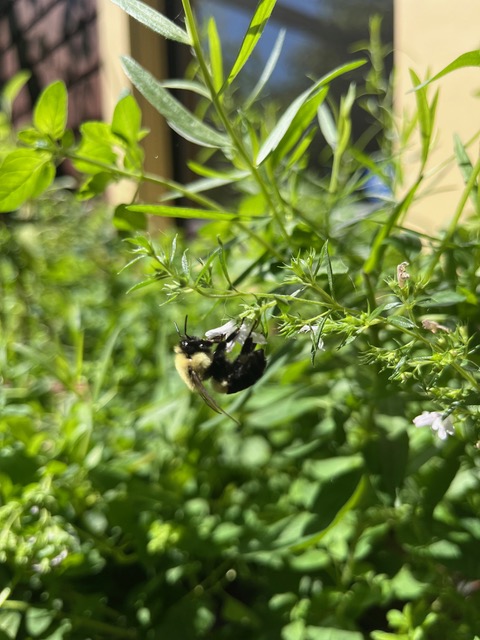Recently, I was writing an article on my laptop sitting at the very spot on my back porch where I am now. Even now, outside, the oregano is in flower. As it’s been an unusually warm autumn, the occasional bee is enjoying the last of the flowers. However, when writing the article, it was still summer.
Pollinators like bumblebees love oregano. As I sat there writing, there was a constant buzz of bumblebees gathering pollen and nectar. Mason bees, sweat bees, and drone flies would also join in, but they were much quieter. I found the sound of the bees and their companionship comforting, especially as I was writing. When I was stuck somewhere in the text, I’d watch the bees. I then started to write about the bees and oregano in the article. It’s not that odd, as the article was about a project of ours - designing a technological network “with” bees. I say “with” as a figure of speech, since the bees aren’t truly “aware” that they’re part of the design team – at least they’re not participating in the design in any meaningful way. So, if we’re not designing “with” bees then what are we doing? In this project, we decided early on that we weren’t going to design “for” bees, like designing a beehive for honeybees. This would then lead to a transactional relationship of extracting honey in exchange for a secure habitat. But what relationship are we really seeking? Maybe we’re designing “alongside” bees, like I am now - sitting on a porch writing alongside the bumblebees and oregano.

These relationships, with, for, transactional, and alongside become tricky when applied to more-than-human worlds, e.g., bees, oregano, technologies, and people. These relationships describe human relations and are less ambiguous when designing for humans, despite how varied and intersectional we are. Given the vaster plurality of more-than-human worlds, we need a new language for describing more-than-human relationships. Such a language and guide to action for design needs to be fostered through care, attention, and attunement to nonhuman agencies, multispecies, and diverse temporalities as we design.
It’s surprising that these questions haven’t been asked sooner (except for indigenous and non-western knowledges and practices), as we’ve always designed in a multispecies world, and we’ve long realized that technologies are not within our control. The climate crisis is a rude wake-up call to the fact that we do cohabit a more-than-human world. And so, designing technologies in a shared world with bumblebees, pollen, nectar, and oregano is not only to acknowledge our more-than-human world, but more importantly to seek better ways to cohabit within it.




